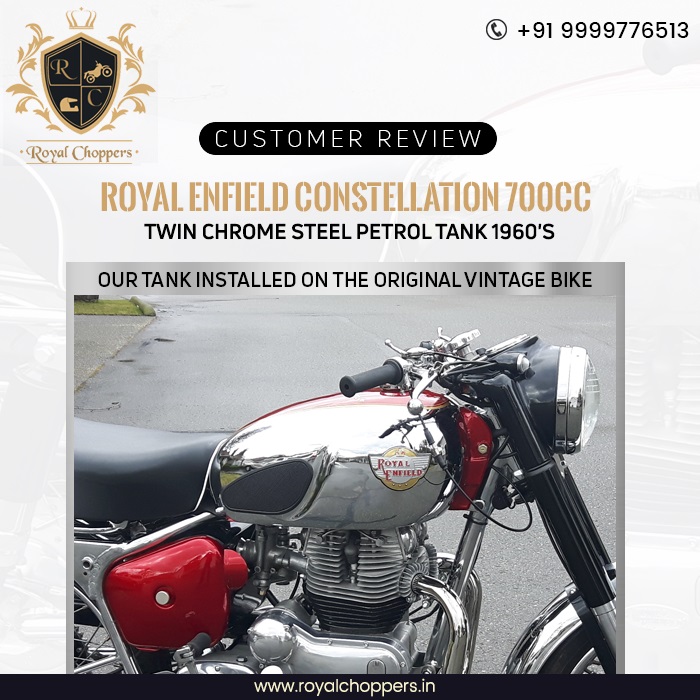-
Your shopping cart is empty!
Things You Should Check In Motorcycle During Cold Start Problems

The helmet is done. Check the jacket glove inspection
Snacks and emergency supplies in the backpack are done.
You put your leg over the bike and press your thumb
against the starter.
But nothing occurs!
We'll explore the typical causes of cold start issues in
this post, along with some practical advice on how to avoid them by a Vintage Harley Davidson motorcycle
parts manufacturer -
Shall I start the motorcycle in the morning?
As long as you take the proper precautions before
starting your motorcycle in the cold, it is okay to do so.
Some bike riders in cold climates switch to a low
viscosity oil that warms up more readily in frigid conditions in order to get
their bike ready for winter riding.
The most crucial thing to remember when starting a bike
cold is to let it warm up to operating temperature first.
After starting their bike, many inexperienced motorcyclists make the frequent mistake of aggressively revving the engine. If you do this too frequently, your engine may suffer harm.
Is it Common that Motorcycles Won’t Cold Start?
For new riders who may not be familiar with how to
maintain their bike while they aren't riding it, this can be a typical issue.
Motorcycles with carburettors experience cold start
issues more frequently than contemporary fuel-injected ones. However, EFI
vehicles are still susceptible to cold start issues, especially if they are
poorly maintained.
Battery discharge, poor fuel quality, or fouled-out spark
plugs are the most typical causes of cold start issues.
Carburettor
Models with carburettors are more prone to experiencing
issues with cold starts. This is because carburettors struggle to enrich fuel
when the engine is starting. Since EFI systems are automated, the air-fuel
ratio can be changed.
Make sure you are using the choke if your carburetted
bike is difficult to start in the morning.
The choke valve reduces airflow to the carburettor(s) and
permits a higher fuel-to-air proportion, which makes it simpler to start the
motorcycle.
Your bike may also be more difficult to start if the gas
in the float bowl of the carburettor is stale.
Spark Plugs
Your engine starts when a spark from a spark plug ignites
it. You can have trouble starting the bike from a cold start if they are fouled
out.
For details on how to remove your spark plugs, consult
your owner's manual.
A spark plug might foul out for a variety of reasons. If
your bike is running wealthy is one of them. This indicates that the bike is
receiving excessive fuel.
On motorcycles with carburettors, the issue may be fixed
by a straightforward adjustment of the fuel mix screw. On fuel-injected
motorcycles, it's possible that one injector isn't closing all the way,
allowing more gasoline to enter.
Not all of the carbon in the fuel can burn if the bike is
running rich, and the deposits attach to hot areas like the spark plug tip.
Your spark plug tips will get black or grey as a result of this.
Fuel
Fuel has a limited shelf life, particularly now that more
ethanol is used to make gasoline.
Long-term storage of fuel on your motorcycle will likely
result in harm from the fuel breaking down in the tank.
Ethanol attracts moisture as it degrades. Your tank's rust
may begin to accumulate due to dampness, and gaskets and gasoline lines may
corrode.
Perfectly said by a Vintage Horex motorcycle parts
manufacturer, if it has been sitting for a while, it loses its ability to burn,
which makes starting it very impossible.
Battery
Usually, this is the cause of bikes not starting.
Batteries can be picky and degrade if they are not properly maintained.
If your battery has been sitting about for a while or is
electrolyte low, it may eventually die. A battery will discharge in colder
conditions than in hot ones.
If your bike makes the terrifying double click sound when
you press the start button, get a new battery from your neighbourhood
motorcycle parts store.
Recent Blogs
- The Advantages of Buying Vintage Motorcycle Parts Online
- Vintage Massey Ferguson: A Legacy of Farming Excellence
- Read This Article If You Love Royal Enfield Motorcycles
- The One & Only Article On Husqvarna Motorcycles Is Now In Public
- Things You Should Check In Motorcycle During Cold Start Problems
- Get Rid Of Cold Starting Trouble With These Professional Tips
- Top Motorcycle Riding Tips You Should Consider
- Long Distance Motorcycle Riding Tips by The Professionals
- Top 5 Countries That Admires Motorcycles the Most
- Basic Motorcycle Maintenance Checks You Should Definitely Know
- The Most Popular Vintage Motorcycles in The History
- Pre-Ride Checklist for Enthusiastic Motorcyclist
- Iconic Vintage Motorcycles of All Time
- Popular Vespa Models from 1946-51 You Should Know
- Valuable Tips On Maintaining a Vintage Motorcycle

 Need Help ?
Need Help ?